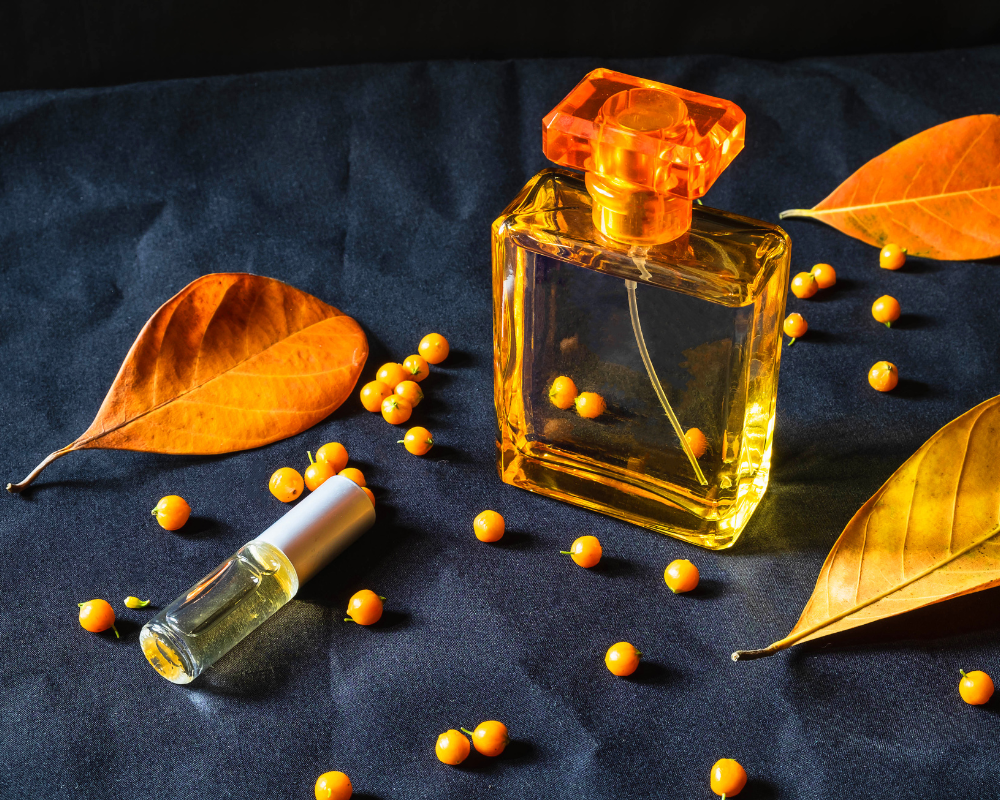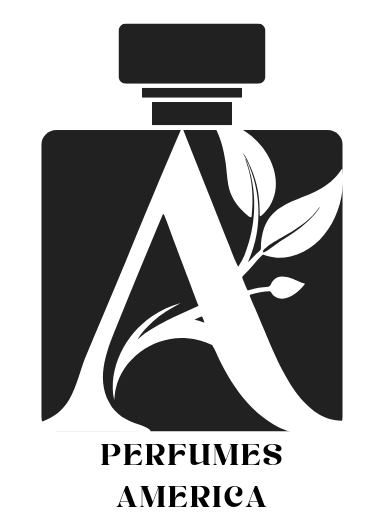The History of Perfume – From Ancient Civilizations to Modern Luxury

Perfume has always been more than just a fragrance. It is a symbol of identity, a reflection of culture, and a silent yet powerful form of self-expression. For thousands of years, humanity has turned to scents not only to smell pleasant but also to connect with spirituality, medicine, love, and luxury.
At The Perfumes America, we celebrate perfume as an art form—a timeless tradition that has traveled across civilizations, evolving into the luxury accessory it is today. In this article, we’ll take you on a journey through the fascinating history of perfume, from its ancient beginnings to the modern-day fragrance industry.
🌿 Perfume in Ancient Civilizations
The word perfume originates from the Latin “per fumum”, meaning “through smoke,” highlighting its early association with burning incense and resins. Ancient societies believed that fragrance had divine power—capable of purifying the soul, pleasing the gods, and protecting against evil.
From Egyptian temples to Mesopotamian rituals, perfume was deeply woven into everyday life, holding both spiritual and social significance.
🌞 Perfume in Ancient Egypt
No civilization valued fragrance as much as the ancient Egyptians. Perfume was not just a luxury but a sacred necessity, used in both religious rituals and personal grooming.
🌸 Uses of Perfume in Egypt:
- Spiritual Rituals: Perfumed oils and incense were offered to gods in temples. Fragrance was believed to be the “sweat of the sun god Ra.”
- Mummification: Scents like myrrh, frankincense, and cinnamon were used to embalm bodies, symbolizing eternal preservation.
- Royalty & Beauty: Cleopatra herself was famous for using exotic perfumes as part of her allure. She reportedly welcomed Julius Caesar and Mark Antony with rooms filled with fragrant smoke.
- Daily Life: Both men and women applied perfumed oils on their bodies to protect skin from the desert climate and to smell divine.
🌿 Ingredients Used:
- Frankincense
- Myrrh
- Lotus flower
- Cinnamon
- Resins and balms
Perfume in Egypt was so valuable that it was considered currency—used in trade and even buried with pharaohs as a symbol of wealth in the afterlife.
🌍 Perfume in Mesopotamia
While Egypt perfected the art, Mesopotamia (Babylonia & Assyria) contributed equally to the crafting and distilling of perfumes.
🌟 Contributions:
- The world’s first recorded perfumer was a woman named Tapputi-Belatekallim (circa 1200 BCE), who worked in Mesopotamia. She created perfumes using flowers, oils, and resins with early forms of distillation.
- Perfume played a role in royal ceremonies, where kings and queens were anointed with fragrant oils as symbols of power.
- Temples burned aromatic woods and herbs during rituals, much like in Egypt.
Mesopotamian texts and clay tablets even document recipes for perfumes—showing that fragrance creation was both a science and an art thousands of years ago.
Perfume is one of humanity’s oldest arts. It has carried prayers to the heavens, signaled power and status, preserved memory and desire, and—over millennia—sparked advances in chemistry, trade, and design. Here’s how scent traveled from temple smoke to the modern fragrance counter.
Origins: Smoke, Resin, and Ritual (c. 3000–500 BCE)
- Incense before liquid perfume: Early “perfume” was burned or heated. Civilizations from ancient Egypt and Mesopotamia to the Indus Valley and early China prized resins like frankincense and myrrh, woods like agarwood and sandalwood, and aromatics such as cinnamon and cardamom. Scent sanctified rituals, masked odors, and communicated with the divine.
- Egypt’s kyphi: One of the first complex, documented perfumes, kyphi combined wine, honey, resins, and spices. Recipes were inscribed on temple walls; it was burned in rituals and used medicinally.
- The first named perfumer: Tapputi-Belatekallim (c. 1200 BCE, Mesopotamia) is history’s earliest recorded chemist-perfumer. Cuneiform tablets describe her use of solvents, distillation-like techniques, and meticulous record-keeping.
The Classical World: Craft and Commerce (c. 500 BCE–500 CE)
- Greece: Theophrastus wrote “On Odours,” analyzing extraction methods and the behavior of scents—an early theory of perfumery. Perfume was woven into athletics, medicine, and daily grooming.
- Rome: The unguentarii (perfumers) produced thick, oil-based unguents stored in elegant glass. Aromatics were status symbols; Pliny and Plutarch decried their expense even as the empire consumed them in quantity.
- Trade: Spices and aromatics traveled vast routes—frankincense from Arabia and the Horn of Africa, cinnamon from South and Southeast Asia, spikenard from the Himalayas—entangling perfume with geopolitics and wealth.
East and South Asia: Incense Arts and Attars (1st millennium CE)
- China and Japan: Fragrance flourished mainly as incense. In Japan, kōdō (“the way of incense”) became a codified art from the Heian period onward—less about personal scent, more about aesthetic appreciation and ceremony.
- The Indian subcontinent: A distinct attar (ittar) tradition developed—hydrodistilled essential oils captured in sandalwood oil. Later, during the Mughal era, attars of rose, jasmine, vetiver, and hina (a complex blend) became luxurious refinements. A famous Mughal-era legend credits Empress Nur Jahan with noticing rose oil collecting on rosewater—a poetic origin for rose attar.
The Islamic Golden Age: The Science of Scent (8th–13th centuries)
- From alchemy to chemistry: Scholars such as Jabir ibn Hayyan improved the alembic still; al‑Kindi (c. 9th century) compiled the Book of the Chemistry of Perfume and Distillations with recipes and methods; Ibn Sina (Avicenna, 10th–11th centuries) refined steam distillation and popularized rose water and essential oils.
- Perfumery as learned craft: Techniques standardized; alcohol-based extractions appeared in the Islamic world before spreading west. Apothecaries and perfumers overlapped, linking fragrance, medicine, and hygiene.
Europe’s Renaissance to Enlightenment: Luxury, Guilds, and Eaux (14th–18th centuries)
- Early alcohol perfumes: “Hungary Water” (a rosemary-citrus distillate) is among Europe’s earliest notable alcohol-based perfumes (14th century, often linked to Queen Elizabeth of Hungary).
- Glove-perfumers and Grasse: In 16th‑century France, leather gloves were scented to mask tanning odors; these artisans evolved into perfumers. Catherine de’ Medici brought Italian perfumers to her court, and Grasse’s climate proved perfect for jasmine and May rose. By Louis XIV’s time, Versailles was the “perfumed court.”
- Eau de Cologne: In 1709, Johann Maria Farina launched Eau de Cologne—bright citrus, herbs, and neroli in alcohol—ushering in a craze for refreshing “eaux” across Europe.
The Industrial Age: Chemistry Changes Everything (19th century)
- Synthetics arrive:
- Coumarin (synthesized 1868) gave a sweet, hay-like tonka note; Houbigant’s Fougère Royale (1882) used it to create the first modern “abstract” fragrance family (fougère).
- Vanillin (1874) and ionones (1890s; violet-like) expanded the palette.
- Nitro musks (late 19th century) introduced powerful musky warmth (later largely phased out for safety/environment).
- Modern houses and schools: Guerlain (1828), Houbigant (1775), and others helped establish perfumery as art-industry. Bottle design, branding, and signature “bases” (proprietary accords) shaped a recognizably modern market.
The 20th Century: Iconic Bottles, New Musks, Global Markets
- Aldehydes and abstraction: Chanel No. 5 (1921, Ernest Beaux) used sparkling fatty aldehydes to create a new, diffusive aura—modern perfumery’s watershed. Guerlain Shalimar (1925) built an “amber” style around vanilla and balsamic notes; Joy (1930) became a byword for luxurious naturals.
- New molecules, new moods:
- Hedione (methyl dihydrojasmonate) brought airy jasmine radiance (popularized by Dior Eau Sauvage, 1966).
- Iso E Super (1970s) gave woody, velvety lift; ambergris replacements like Ambroxan (from clary sage) offered lasting warmth.
- Regulation and reformulation: The industry created IFRA (1973) to set safety standards. Over time, allergens and restricted materials (e.g., high-atranol oakmoss, certain nitro musks) forced classic formulas to evolve.
- Styles and trends: The 1980s favored bold, opulent signatures; the 1990s introduced “aquatics” (calone-driven sea-breeze effects) and gender-bending freshness (ck One). Marketing amplified the gender divide even as many scents remained effectively unisex.
The 21st Century: Niche, Sustainability, and Scent Tech
- Niche renaissance: Independent houses (e.g., Frederic Malle, Serge Lutens, Byredo, Le Labo) elevated perfumer authorship, unusual materials, and story-driven compositions. Single-molecule showcases (e.g., Molecule 01 with Iso E Super) reframed what a “perfume” could be.
- Global olfactory exchange: Western perfumery embraced oud, saffron, cardamom, and incense traditions; Middle Eastern perfumery fused classic attar practices with contemporary styles.
- Sustainability and ethics: Pressure for cruelty-free musk (synthetics replacing deer musk), responsible sourcing (e.g., Haitian vetiver, Australian-grown sandalwood), and biotech aromatics (e.g., fermentation-derived patchouli- and sandalwood-like notes). Transparency about allergens and sourcing has grown.
- Tools of the trade: Headspace analysis and GC/MS let perfumers capture the scent of living flowers that don’t yield usable oils (e.g., muguet/lily-of-the-valley). Data-driven formulation aids, large aroma-chemical libraries, and “white biotech” expand possibilities—while naturals remain central to many compositions.
Signature Ingredients Through the Ages
- Antiquity: Frankincense, myrrh, labdanum, spikenard, cinnamon, balsams, saffron.
- Medieval–Renaissance: Rose, orange blossom (neroli), rosemary, lavender; tinctures and pomanders.
- Grasse cultivation: Jasmine, rose centifolia, tuberose—hand-harvested for enfleurage and distillation.
- Industrial-to-modern: Coumarin, vanillin, ionones, aldehydes, synthetic musks, Ambroxan, Hedione, Iso E Super, contemporary woody ambers.
- Regional pillars: Oud (agarwood), sandalwood, patchouli, vetiver, benzoin, ylang-ylang.
Milestone Timeline
- c. 1200 BCE: Tapputi, earliest recorded perfumer-chemist (Mesopotamia).
- c. 2nd millennium BCE: Egyptian kyphi recipes inscribed; ritual incense widespread.
- 9th–11th centuries: Islamic Golden Age—al-Kindi, Jabir ibn Hayyan, and Avicenna advance distillation and perfume science.
- 14th century: Early alcohol-based “Hungary Water” circulates in Europe.
- 16th century: Glove-perfumers and Italian influence shape French perfumery; Grasse rises.
- 1709: Farina’s Eau de Cologne popularizes citrus “eaux.”
- 1882: Fougère Royale introduces synthetics as creative backbone.
- 1921: Chanel No. 5 defines aldehydic modernity.
- 1966–1970s: Hedione, Iso E Super, and ambergris substituents shift textures and longevity.
- 1973+: IFRA guidelines standardize safety; formulas adapt.
- 1990s: Aquatic freshness and unisex marketing reshape the mainstream.
- 2000s–present: Niche perfumery, biotech ingredients, and sustainability drive innovation.
Why Perfume Endures
- Memory and identity: Smell is neurologically tied to memory; a perfume can become a personal signature or a cultural emblem.
- Technology and art: Each leap in chemistry opened new aesthetics, from aldehydic abstraction to transparent woods and airy florals.
- Cultural exchange: Perfume continuously hybridizes—incense traditions inform modern ambers; attars inspire oil-based microtrends; niche and mainstream cross-pollinate.
Further Exploration
- Visit: Osmothèque (Versailles) and the International Perfume Museum (Grasse) for archives and history.
- Read: Perfumes: The A–Z Guide (Luca Turin & Tania Sanchez); The Secret of Scent (Luca Turin); Scent and Chemistry (Ohloff, Pickenhagen & Kraft); The Essence of Perfume (Roja Dove).
- Smell history: Seek reformulations or reissues of Fougère Royale, Shalimar, Chanel No. 5, Eau Sauvage, and a classic Eau de Cologne to trace stylistic shifts.
